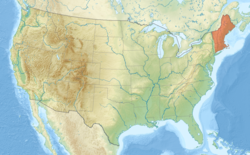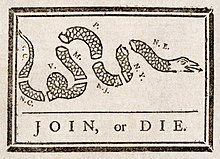Draft:New England Independence Campaign
 | Draft article not currently submitted for review.
This is a draft Articles for creation (AfC) submission. It is not currently pending review. While there are no deadlines, abandoned drafts may be deleted after six months. To edit the draft click on the "Edit" tab at the top of the window. To be accepted, a draft should:
It is strongly discouraged to write about yourself, your business or employer. If you do so, you must declare it. Where to get help
How to improve a draft
You can also browse Wikipedia:Featured articles and Wikipedia:Good articles to find examples of Wikipedia's best writing on topics similar to your proposed article. Improving your odds of a speedy review To improve your odds of a faster review, tag your draft with relevant WikiProject tags using the button below. This will let reviewers know a new draft has been submitted in their area of interest. For instance, if you wrote about a female astronomer, you would want to add the Biography, Astronomy, and Women scientists tags. Editor resources
Last edited by ImperialThrone (talk | contribs) 60 days ago. (Update) |
Republic of New England | |
|---|---|
 States commonly accepted to be part of New England | |
| Capital | Boston (de facto) |
| Largest city | Boston |
| Official languages | New England English (de facto) |
| Demonym(s) | New Englander, Yankee,[1] Novanglian, Novanglican (archaic)[2] |
| Area | |
• Total | 71,987.59 sq mi (186,447.0 km2) |
| Population | |
• 2020 census | 15,116,205 |
• Density | 210/sq mi (81.1/km2) |
| GDP (nominal) | 2022 estimate |
• Total | $1.32 trillion "GDP by State". Retrieved February 28, 2024. |
The New England Independence Campaign (NEIC) is a grassroots political organization that advocates for the independence of the New England region of the United States. The proposed country would include the states of Connecticut, Rhode Island, Massachussetts, New Hampshire, Vermont, and Maine.
History of the concept[edit]
New England is the oldest region of the United States with clearly defined borders. Regional philosophy on many important topics continues to be driven by ideas brought by Pilgrims during the Puritan migration to New England (1620-1640); a prime example of this is public education, a highly-valued institution across most of the region.
The first formal union of the region began in 1643 with the establishment of the New England Confederation, a loose alliance of the colonies that ended with the establishment of the Dominion of New England by the British royal government. The Dominion was highly resented in the colonies as it forcibly introduced the Church of England into Massachussetts, whereas the Confederation had been intent on supporting local Puritan churches. The Dominion also replaced local colonial leaders with royal governors.
New England was a hotbed of activity before and during the American Revolution, being the site of major events such as the Boston Tea Party and the Battles of Lexington and Concord.

Although New England was not a single political unit after American independence, it continued to be a significant socio-cultural region. By 1784, all six states had introduced gradual abolition. The Federalist Party dominated the region during the First Party System, and had little support south of New Jersey.
The Federalists were generally against the War of 1812, and tended to believe that peace with Britain was the appropriate move. Although much of the funding and personnel for the war came from the northeast, Federalists opposed most bills in Congress that called for more war funding. Furthermore, they opposed Madison's 1814 bill introducing conscription, likening it to the polcies of French ruler Napoleon, who they saw as a dictator.
By 1814, New England was facing the brunt of British aggression. An effective blockade was in place against most of the coast, an American embargo bill prohibited trade, modern-day Maine was partially occupied, and a naval assault on Boston was expected if the war continued.
Most New England governors, with the exception of Governor John Taylor Gilman of New Hampshire, refused to have their state militias placed under the command of the War Department, which would have taken forces away from local coastal defense and allowed redeployment to other locations. Due to this refusal, Madison refused to pay for the expenses incurred by the militias of Connecticut and Massachussetts.
In light of these grievances, 26 delegates from the New England Federalist party agreed to meet at the Hartford Convention on December 15th, 1814. After electing George Cabot as President, the convention carried out secret meetings, with no records of resolutions or votes, for three weeks. As such, it is impossible to know what proposals were put forth. The final report states that New England had a "duty" to assert authority over unconstitutional infringements on its states' rights. While the final report did not propose secession, it did propose several major amendments to the Constitution:
1. Requiring a 2/3 Congressional majority to declare offensive war, admit a new state, or set embargoes
2. Prohibiting any trade embargo lasting over 60 days
3. Removing the three-fifths advantage of the South
4. Limiting the presidential term to one
5. Requiring the President to be from a different state than his predecessor
It was somewhat understood that the Democratic-Republican Party, the opposing and national ruling party, would have never accepted any of these terms. The convention's report was primarily intended to serve as the basis of future negotiations between New England and the rest of the Union.
By the time representatives of the Convention arrived in Washington, D.C, the Treaty of Ghent had been signed and the war was over. Soon after, both the Federalists and the Convention was discredited and widely seen in the rest of the country as treasonous.
Modern history[edit]
Alex Gilbert, a resident of Oakland, Maine founded the New England Independence Campaign in 2014. It remained mostly local until the 2016 United States Presidential Election and the rise of Donald Trump, when the NEIC surged in popularity among New Englanders, especially Democrats, moderates, and libertarians.
The group has since participated in multiple local demonstrations, such as the Tax March (2017), Women's March (2018), and the March for Science (2019).
References[edit]
- ^ "Yankee". The American Heritage Dictionary. Boston, MA: Houghton Mifflin Company. 2000. Retrieved March 28, 2011.
- ^ "Novanglian". Merriam-Webster. Retrieved May 11, 2023.
